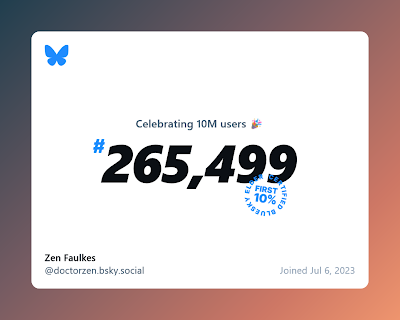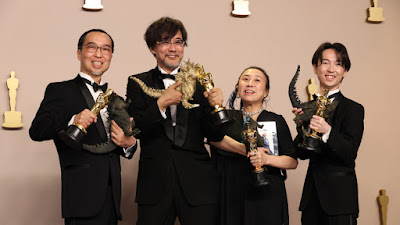First, some backstory.
I wrote this essay for a journal. It was provisionally accepted, but it needed revision. Then I changed jobs, and I was never able to sit down and get the revisions done. A few other things I observed (unrelated to this article) made me reluctant to resubmit this to the journal I originally sent it to. But it’s hard to find a journal, or even a preprint server, interested in opinion articles like this. So I didn’t revise and resubmit it.
But because this topic makes the rounds in academic social media routinely, I thought this was worth sharing in some form, even this first unrevised version.
Because this has been sitting on my hard drive for a while, the article has, to some degree, been overtaken by events. In particular, my comments about using AI for peer review were seen as unrealistic when I submitted this – but that was before the release of ChatGPT.
This article is archived on Figshare: https://doi.org/10.6084/m9.figshare.25746996
Potential problems of paying peer reviewers
Zen Faulkes
School of Interdisciplinary Science, McMaster University (Note, 3 May 2024: I am no longer affiliated with McMaster. Please don’t bug them.)
Pre-publication peer review organized by academic journal editors, funding agencies, and so on (simply called “peer review” from here on) is viewed as a hallmark of quality academic publication. But there are concerns that “reviewer fatigue” is causing trouble for peer review. Authors complain that they receive too many requests to review manuscripts, and editors complain about the difficulty of finding willing and qualified peer reviewers (Fox 2017, Goldman 2015, Vesper 2018). Therefore, many academics suggest that publishers should pay researchers for peer review. This idea appears popular: a poll asking, “Do you think reviewers should be paid for reviewing?” found 85.6% of respondents voted yes, compared to 11.3% voting no, and the remaining 3.0% unsure (n=1,234, with 6.2% opting “Show results” instead of voting) (Academic Chatter 2022).
It is easy to see the appeal of paid peer review. It provides a new incentive for people to agree to review. Reading papers thoroughly and then crafting coherent, useful reviews of the manuscript is work. It takes time, effort, and has opportunity costs for the reviewer. Professional work deserves to be compensated, and many are galled that they are expected to “work for free.” The argument is that publishers are exploiting academics who are foolish enough to provide their work for free. The feeling of exploitation is made worse because most academic publishers are for profit businesses that are extremely profitable. Academics often describe publishers’ profits as “obscene” (Stafford and Brand 2021, Taylor 2012). Even non-profit publishers are criticized for the salaries of those working for the company (Eisen 2016).
It is understandable that academics would resent businesses that make money from scholarly goods and services, which are often publicly funded, when those academic are struggling financially. Compensation for postdoctoral researchers and contingent faculty jobs can be below the poverty line (Gee 2017, Semeniuk 2022). One UK funding agency sent an email suggesting doctoral students could work extra jobs to make ends meet, and listed examples such as “Babysitting” and “Fruit picking” (Lowe 2022). Money is a problem for many academics. But when so many problems can be solved with money, it is easy to forget that not all problems can be solved with money.
Money cannot buy time
Major main reason for prospective reviewers declining invitations is lack of time (Tite and Schroter 2007). When time is at issue, paying for reviews is unlikely to get people to accept the review (Tite and Schroter 2007).
Some aspects of peer review might be improved by paying reviewers, but the overall process of scholarly communication might not be improved.
Payment suggests corruption
Researchers have a long tradition of providing academic knowledge, and other goods and services, for minimal to no costs: “We don’t do it for the money.” Because of this, science was mainly practiced by the wealthy before it was professionalized in the 20th century. This was seen as a way of ensuring research integrity: wealthy researchers were seen as honest, because they would have no financial incentive to lie about their findings.
Unsurprisingly, one of the most common tactics of anti-science campaigns and conspiracy theorists is to argue that scientists are corrupted by money. “Shills for big pharma” (Blaskiewicz 2013, Smith 2017), “getting rich on grant money” (Merzdorf et al. 2019) “companies stifle world changing technology / medical treatments because it would cut into profits” (Demeo 1996), and exhortations to “Follow the money!” are but a few of the variations of this. While it is always difficult to measure the persuasiveness of arguments “in the wild,” that these arguments are used so often over so many years suggests people truly are persuaded by them.
If reviewers were paid, anti-science campaigners could easily point to reviewer payments as evidence that academic publishing is merely a money-making game for insiders (researchers).
Unqualified reviewers
Peer review is valued because it is conducted by fellow experts in a field. Because there are costs to reviewing and little to no recognition, there are few incentives for reviewers to review a paper that is not professionally relevant to them.
Paying for reviews creates a generalized incentive for reviewers to say yes to any paper they are invited to review, regardless of their knowledge of the topic. Because reviewers’ identities are typically confidential, authors who receive poor reviews may want to argue that they had a reviewer who only wanted the money.
Unhelpful reviewers
The overall quality of reviews varies. Some reviewers are detailed and contain multiple specific actionable items that can improve the paper. Other reviews are cursory and contain only vague statements that cannot be easily addressed by authors. Other reviews may be substantive but make unreasonable requests for new experiments and analyses.
Worse, there are many examples of egregiously bad reviews, running the gamut from unhelpful to rude, racist, and sexist commentary unrelated to the content of the article (Silbiger and Stubler 2019, Woolson 2015).
Fair compensation for review
Whether a journal should pay for a perfunctory or insulting review is a specific example of a much larger issue: determining what is fair compensation for a review. Academic manuscripts differ wildly in length and complexity. The amount of effort that people must put into writing reviews also varies. An experienced researcher may be able to assess and review a manuscript very quickly and respond with a concise but informative review.
Because so much discontent about volunteer peer review concerns academic work being undervalued, those arguing that peer reviewers should be paid should also make concrete suggestions for pay scales.
Alternatives to reviewer payment
Paid peer review aims to solve two problems: unwillingness to review (“reviewer fatigue”) and uncompensated labour. A more radical solution to these problems would be to take humans out of the peer review process. There are at least two ways this could be done.
The first solution would be hand over the bulk of peer review to specialist artificial intelligence (AI) expert systems that can review manuscripts. Recent advances in AI systems that can process and manipulate natural language texts, such as GTP-3, this may be viable in the near future (Schulz et al. 2022).
The second solution – less speculative but more radical – is to do away with peer review entirely (in the limited sense of prepublication review organized by editors). There are strong criticisms that pre-publication peer review does not provide the quality control and improvement that researchers want (Smith 2010). Ongoing post-publication peer review might provide an alternative to the journal centered form of peer review that is currently the norm.
If neither of these suggestions are embraced by the research community in the near future (which seems likely), it may be possible to address issues with voluntary peer review by more careful accounting of service obligation.
The main components of an academic’s job are often described as research, teaching, and service. Academics in universities are often explicitly told how much of their time should be allocated to each of those three parts of the job, but service is often the smallest piece of that budget. It is unsurprising that peer review, a service commitment to the research community, suffers when institutions explicitly show that service is the smallest part of the job description. Nevertheless, researchers with service obligations might be able to account for time spent on peer reviews more carefully to argue for release of other service commitments (e.g., committee work). Similarly, administrators might work to ensure that service obligations are not overlooked or satisfied by trivial “box checking” services.
Service loads in peer reviewing are also distributed unevenly. Journal editors often ask people to review whose jobs have no expectation of service. This includes early career researchers such as grad students and post docs, researchers who hold jobs outside academia, and retired academics. This is hardly fair to those individuals, and people in these positions have the best case for being paid for review because it is literally not their job.
Journal editors might also be able to better balance the service load by broadening the pool of who is asked to review. Many who are willing to provide peer review are rarely, if ever, asked to do so (Vesper 2018). In particular, researchers in “emerging economies” are probably underused as potential peer reviewers (Vesper 2018).
References
Academic Chatter. 2022. Twitter. https://twitter.com/academicchatter/status/1543229417060696066
Blaskiewicz R. 2013. The Big Pharma conspiracy theory. Medical Writing 22(4): 259-261. https://doi.org/10.1179/2047480613Z.000000000142
Demeo S. 1996. The corporate suppression of inventions, conspiracy theories, and an ambivalent American dream. Science as Culture 6(2): 194-219. https://doi.org/10.1080/09505439609526464
Eisen M. 2016. On pastrami and the business of PLOS. https://www.michaeleisen.org/blog/?p=1883
Fox CW. 2017. Difficulty of recruiting reviewers predicts review scores and editorial decisions at six journals of ecology and evolution. Scientometrics 113(1): 465-477. https://doi.org/10.1007/s11192-017-2489-5
Gee A. 2017. Facing poverty, academics turn to sex work and sleeping in cars. https://www.theguardian.com/us-news/2017/sep/28/adjunct-professors-homeless-sex-work-academia-poverty
Goldman HV. 2015. More delays in peer review: Finding reviewers willing to contribute. https://www.editage.com/insights/more-delays-in-peer-review-finding-reviewers-willing-to-contribute
Lowe A. 2022. Twitter. https://twitter.com/adriana_lowe/status/1549754463619108865
Merzdorf J, Pfeiffer LJ, & Forbes B. 2019. Heated discussion: Strategies for communicating climate change in a polarized era. Journal of Applied Communications 103: 3. link.gale.com/apps/doc/A600269487/AONE?u=anon~a35eccce&sid=bookmark-AONE&xid=f37daf5b
Schulz R, Barnett A, Bernard R, Brown NJL, Byrne JA, Eckmann P, Gazda MA, Kilicoglu H, Prager EM, Salholz-Hillel M, ter Riet G, Vines T, Vorland CJ, Zhuang H, Bandrowski A, & Weissgerber TL. 2022. Is the future of peer review automated? BMC Research Notes 15(1): 203. https://doi.org/10.1186/s13104-022-06080-6
Semeniuk I. 2022. Prominent researchers urge Ottawa to increase top science scholarships above poverty line. https://www.theglobeandmail.com/canada/article-prominent-researchers-urge-ottawa-to-increase-scholarships-for-top/
Silbiger NJ & Stubler AD. 2019. Unprofessional peer reviews disproportionately harm underrepresented groups in STEM. PeerJ 7: e8247. https://doi.org/10.7717/peerj.8247
Smith R. 2010. Classical peer review: an empty gun. Breast Cancer Research 12(Suppl 4): S13. https://doi.org/10.1186/bcr2742
Smith TC. 2017. Vaccine rejection and hesitancy: A review and call to action. Open Forum Infectious Diseases 4(3): ofx146. https://doi.org/10.1093/ofid/ofx146
Stafford T & Brand CO. 2021. Commercial involvement in academic publishing is key to research reliability and should face greater public scrutiny. https://doi.org/10.31222/osf.io/rjmvh
Taylor M. 2012. Academic publishers have become the enemies of science. https://www.theguardian.com/science/2012/jan/16/academic-publishers-enemies-science
Tite L & Schroter S. 2007. Why do peer reviewers decline to review? A survey. Journal of Epidemiology and Community Health 61(1): 9-12. https://jech.bmj.com/content/jech/61/1/9.full.pdf
Vesper I. 2018. Peer reviewers unmasked: largest global survey reveals trends. Nature. https://doi.org/10.1038/d41586-018-06602-y
Woolson C. 2015. Sexist review causes Twitter storm. Nature 521: 9. https://doi.org/10.1038/521009f


















